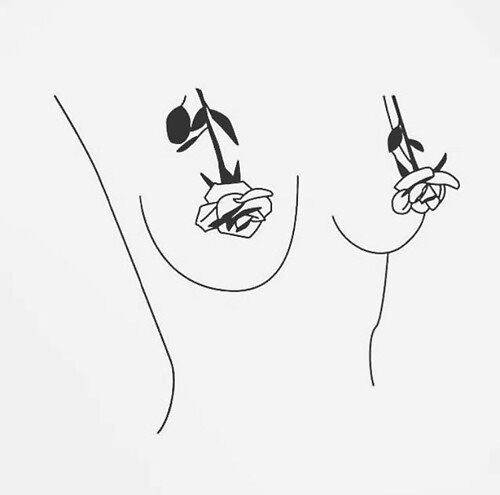Nipples and Nudity: Women are still fighting for the right to choose
Although ‘Free The Nipple’ influences each culture differently, the heart of the movement remains the same
Alison Stecker, Culture Staff Writer
In 2019, the New Hampshire Supreme Court fined three women for exposing their breasts in public. The women argued that banning female–and not male–toplessness violates the 14th Amendment, but the court refuted that female toplessness did not equate with the “traditional understandings of nudity” (Hurley, 2020).
The Free the Nipple movement is rooted differently depending on how cultures treat female nudity and nipples. In Western cultures, white nipples are sexualized and female toplessness is deemed inappropriate, so the movement focuses on gender equality and desexualizing women’s bodies (Smith, 2015). The shaming of the female nipple reflects how western cultures are unevolved and struggling to give women equal opportunities to make choices about their own bodies.
As fashion trends shifted, breasts began to become more sexualized in western culture compared to others. There are a lot of clothing designs now that weren’t in style decades ago such as push-up bras or crop tops, that accentuate breasts and sexualize them as erotic objects (Smith, 2015). Breasts’ primary purpose is to nurture children, not for the sexual pleasure of men.
The hypersexualization of breasts has led to discomfort and shame in naked women in Western cultures. Chelsea Handler attempted to garner support for the movement on Instagram by posting a topless photo of herself riding a horse to mimic Vladimir Putin. The platform removed her post three times for violating their terms and conditions (#FreeTheNipple, 2015). It’s a double standard that Putin could freely post a photo of his ‘man boobs’ online without fear of censorship, but women’s breasts must be removed because they constitute inappropriateness and nudity. Women can only post breasts in a photo if the nipples are blurred out. Instagram even hid the ‘Free The Nip’ hashtag from viewers to discourage the circulation of nudity on the web (#FreeTheNipple, 2015).
Freeing the nipple and embracing nudity is much more normalized in some European cultures than in America. Parisian designer Adelin Rapon never liked wearing bras because she always felt suffocated by them. She was raised in a French household that didn’t view braless women as “sexual” or “taboo” (Valenti, 2017). “Even as a woman with breasts, I do what I want with my body. Every human has nipples. There shouldn’t be any shame [in showing them], but if you want to hide them, that’s okay too, as long as the choice is yours,” she said (Valenti, 2017).
Not all European countries are as open-minded to gender equality and “freeing the nip.” In Ukraine, Femen emerged as a new social movement to openly disapprove of Islamic states (Gordts, 2013). Femen held a protest called International Topless Jihad Day (ITJD), where topless protestors marched all around Europe to combat inequality. “We’re free, we’re naked, it’s our right, it’s our body, it’s our rules, and nobody can use religion, and some other holy things, to abuse women, to oppress them,” said Femen member Alexandra Shevchenko (Gordts, 2013). ITJD sparked lots of controversy in Eastern Europe, revealing the difficulties some cultures face in modernizing their conservative morals.
Melissa, a 24-year-old girl living in New York City, reflects on how her Dominican culture would react to a topless woman in public. She wouldn't mind walking around with her nips out in New York, but in her home country, it’s a different story. “My county’s really close-minded. Since I grew up there, I don’t really know if I would be able to do it,” she said (David, 2020). Despite this differing cultural response, Melissa still believes anyone should ‘free the nip’ if they choose because no one should make a big deal about it. “Instead of teaching people not to go topless, they should be teaching men not to catcall people,” she said (David, 2020).
The movement is prevalent everywhere, but it’s more influential in cultures that are more closed-minded toward feminist initiatives. Women all around the world want to combat gender inequality and fight for the choice to make decisions about their own bodies, even if their cultures don’t support the movement. No one will ever settle on one traditional definition of nudity and appropriateness, but it’s important that any woman who wants to flaunt her nips can. If you don’t want to walk around the streets topless, that’s cool too. There are differences in the way the Free The Nipple movement influences each culture, but in every country, women unite for the opportunity to choose.
Sources:
#FreeTheNipple: Liberation or titillation? (2015, April 06). The Guardian.
David, S. (2016, June 10). We Asked New York Women If They #FreeTheNipple. Complex.
Gordts, E. (2013, April 05). NSFW PHOTOS: International Topless Jihad Day. HuffPost.
Hurley, L. (2020, January 13). U.S. Supreme Court refuses to 'Free the Nipple' in topless women case. Reuters.
Smith, M. (2015, January 15). No, You're Definitely Not 'Hardwired' to Stare at Women's Breasts. Science Alert.
Valenti, L. (2017, December 27). The #FreetheNipple Movement Came Stateside in 2017-But French Girls Have Been Doing It for Decades. Vogue.

